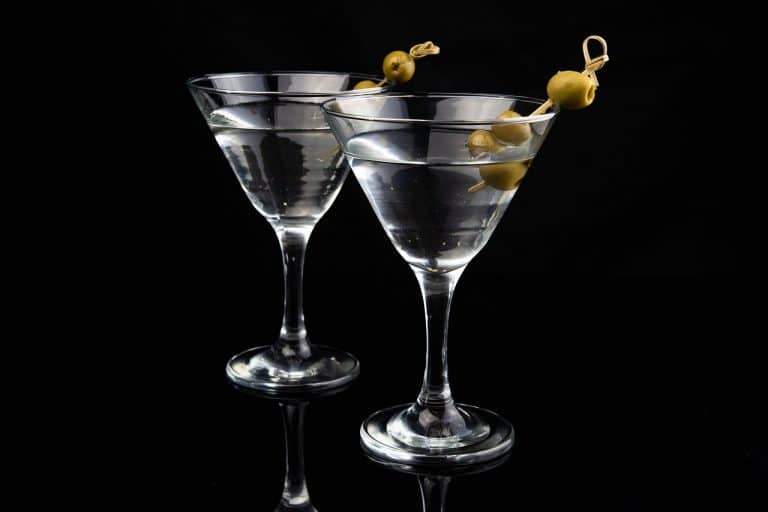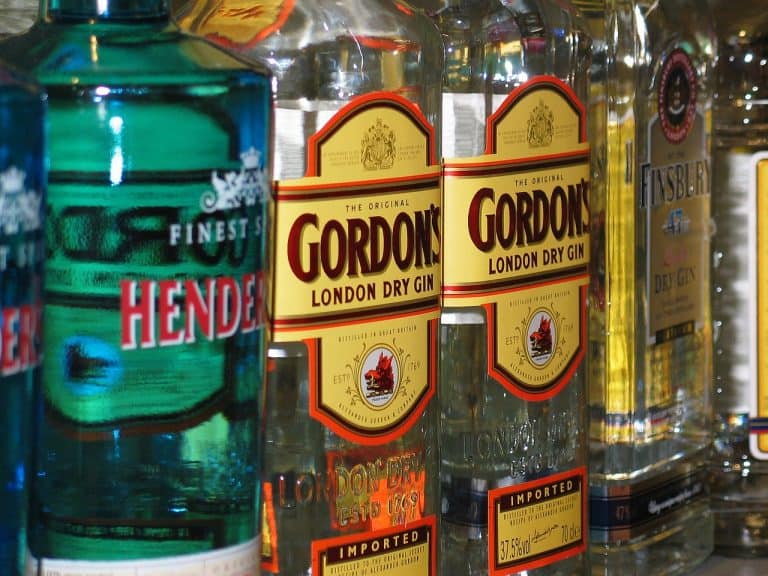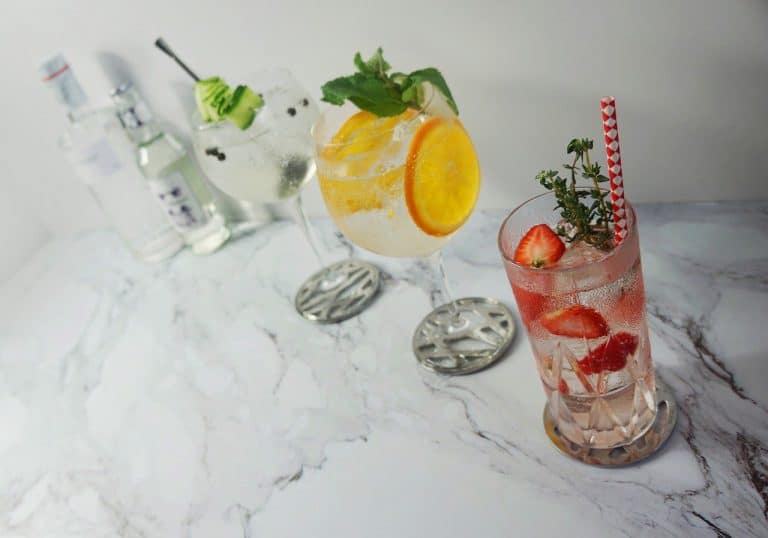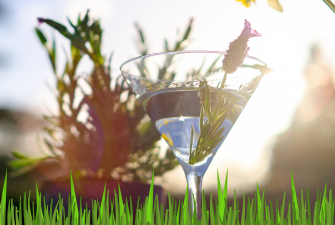Can Gin Be Made without Juniper Berries? Is It Possible?
Gin is an essential spirit in a ton of amazing cocktails, but what if you don’t like the piney taste the juniper berries bring, or what if you’re allergic to juniper berries? Are there alternatives to gin or is it possible to make gin without juniper berries?
It’s actually required by law for gin to contain juniper berries as the predominant flavor. If a spirit does not contain juniper berries or has another flavor as the most dominant, it can not be considered a gin.
Gin has to contain mostly juniper berries to qualify as a gin by law, but you can make drinks that taste a lot like gin but without the piney taste of juniper berries.
In this article, we’ll explain more in-depth what gin consists of and how it is made.
Main Ingredients Of Gin
Gin is a neutral grain (wheat, barley, corn, etc.) spirit like vodka, but with one main difference. Vodka is basically just distilled alcohol mixed with water, whereas gin is also infused with different botanicals to give it a unique taste.
The main botanical used for a gin has to be the juniper berry, as this is required by law to classify a spirit as a gin.
The first step in making gin is distilling alcohol from a neutral grain like barley, wheat, corn, and/or rye.
Producers of gin cannot qualify their spirit based on its age, which is why most gin is colorless.
Most gin makers buy neutral alcohol instead of distilling it themselves. This way they save time on a process that in theory anyone could do, so they can focus on creating the best flavor profile for their gin.
The main thing that sets a gin apart from other spirits (especially vodka), is the infusion of botanicals. After the distillation, the botanicals are added to the neutral spirit. This can be done in two different ways.
The first one is just adding the flavors of different botanicals to a distilled spirit and then bottling it.
During the second manner, the flavors are added by infusing the spirit with botanicals while distilling the liquid for a second time. This way the different flavors of the botanicals can mix with the spirit while it’s being heated.
This kind of similar to how tea is made. You add botanicals to a hot liquid, so the flavors get extracted out of the botanical and into the liquid itself. Both ways of adding flavor to gin result in a different flavor profile.
Because no way is the best way to add flavors to a gin, both are used regularly. Some gins, however, have to be created a certain way to be classified as a certain type of gin. For instance: a London Dry gin has to be flavored through distillation.
As stated before, juniper berries have to be the predominant taste in a spirit for it to classify as a gin. Mixing a spirit (or alcohol molecules, to be specific) with juniper berries results in the addition of a lot of different flavors like a piney, citrusy, woody, musty, and spicy flavor.
The exact flavors and proportions vary between juniper berries and especially between where they are grown.
Because of the variation between flavor profiles of different locations, most gin-makers have a preferred farmer whom they buy all their juniper berries.
Even though the juniper berry can already add so many different flavors to a spirit, most gin-makers also add other different botanicals to their gin.
They can do this to accentuate a flavor that’s already present in juniper berries or they do this to add a different flavor to the drink.
Most gin-makers add more botanicals to their gin to give it a more citrusy taste. But other botanicals that are used are for instance: cucumber, strawberry, lemon peel, anise, and cinnamon, just to name a few.
This makes for a great variety between different gins and especially between different gin brands.
As we said before, the predominant flavor of gin must come from juniper berries. ‘Predominant’, however, is really subjective, someone might find a certain gin taste predominantly like juniper berries, while someone else doesn’t.
Therefore some gin-makers like to test the boundaries of what could classify as a gin, by giving the gin really unique flavor profiles. This results in even more variation in taste between different gin brands.
What Does Gin Taste Like
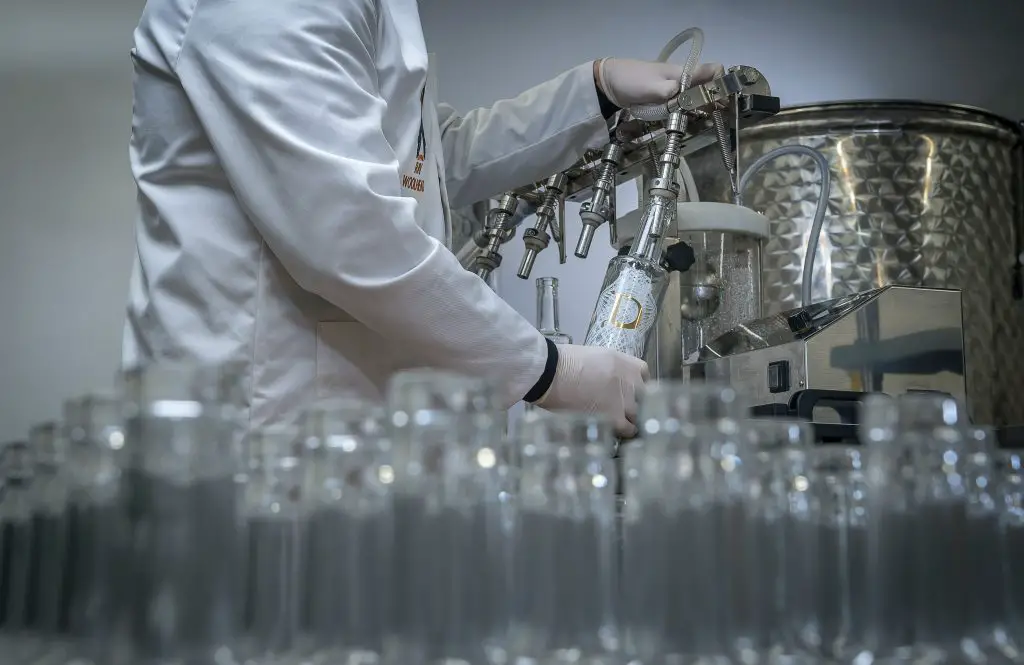
Some say that gin is just vodka with some added flavors and in a way this is true. As we said before, Vodka is basically unflavored alcohol with water. Gin, however, has a lot of different botanicals (and therefore flavors) added to the spirit.
Gin is mostly perceived as really piney and citrusy due to the juniper berries, and some people immediately dislike all gins because of this. What most people who have this opinion don’t know is that you can vary a lot in different flavors for gin.
Hendrick’s gin for instance is known for its cucumber taste. Hendrick’s launched at a time when gin was starting to die down because people started to view it as ‘just juniper’.
Because Hendrick’s added two extra flavors (rose and cucumber) the gin really stood out from classic, more standard gins and inspired other gin-makers to explore new tastes. This change brought back a lot of the popularity gin once had.
Aviation Gin is another really well-known brand of gins. In an Aviation gin, the juniper is toned down a bit compared to a London Dry gin, so you can enjoy the other notes from botanicals such as lavender and orange more. These botanicals give the drink a much more floral taste.
Beefeater is also a very respected name in the gin industry and a lot of people see this as one of the best gins out there.
According to Beefeater, their gin contains nine botanicals: juniper, angelica root, angelica seeds, coriander seeds, licorice, almonds, orris root, Seville oranges, and lemon peel.
The combination of these botanicals makes for a spicy and fruity gin, which has its main focus on juniper.
Alternatives For Gin
If you really do not like the mainly ‘piney’ taste most gins have to offer, or you are allergic to juniper berries, there are a ton of alternatives for gin that would mix really well in already existing gin cocktails.
Here we name a few gin alternatives:
Becherovka is a not-too-popular but very well received spirit. Its recipe is kept a secret, but it has a hint of cinnamon, anise and honey. Like gin, this drink is also best served cold and can be used in a lot of gin cocktails.
Fernet Branca, which is a style of amaro. Amaro is either a neutral grain spirit (like gin) or a wine, macerated with flowers, herbs, and/or citrus peels. Unlike gin, amaro is aged in casks or bottles.
Escubac from Sweetdream is described by Sweetdream as a spicy, citrusy, juniper-free botanical spirit. This drink is distilled on copper and then infused with raisins, vanilla, and saffron.
This drink is a great alternative for gin if you don’t want the juniper berries and it also mixes really well with tonic.
Akvavit (or aquavit), is a not-so-well-known distilled spirit, which originated in Scandinavia. The way akvavit is made is different in each Scandinavian country.
In Norway, it’s mostly aged in barrels, while in Denmark akvavit is more often a clear, un-aged spirit. Like gin and vodka, akvavit is made by distillation of a neutral grain, but unlike vodka, there are flavors added after this distillation.
Akvavit is often compared to gin because it’s sometimes flavored by infusing ingredients during a second distillation, just like gin.
Final Thoughts
Gin cannot be made without juniper berries, because it is required by law to have the predominant flavor of juniper berries in a drink for it to be called a gin.
If you really don’t like the taste a juniper berry has to offer or you are allergic to juniper berries, but you would still like to try something like a gin or a gin cocktail, then there are a lot of alternatives.
These drinks will come very close to different kinds of gin, without the piney taste of juniper berries.

